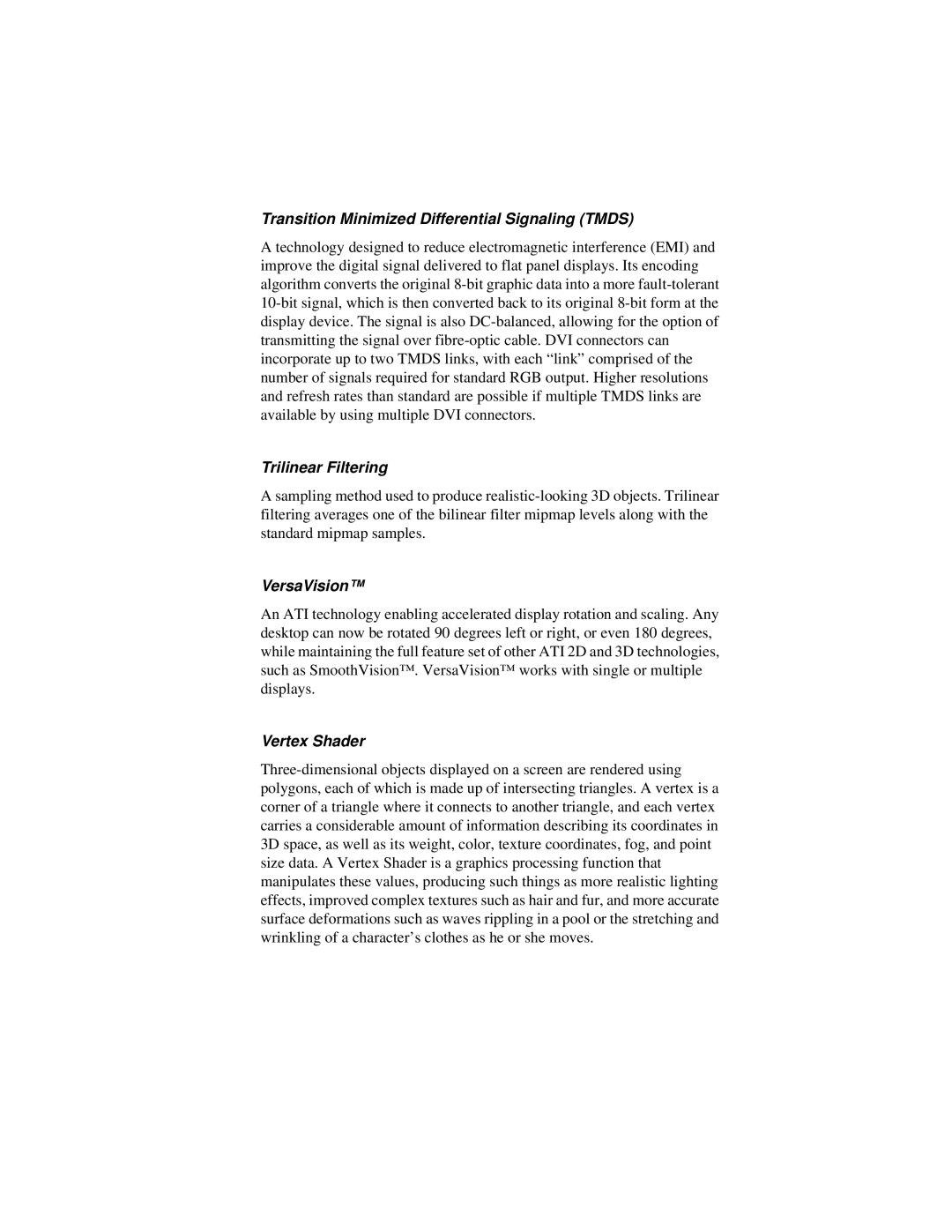Transition Minimized Differential Signaling (TMDS)
A technology designed to reduce electromagnetic interference (EMI) and improve the digital signal delivered to flat panel displays. Its encoding algorithm converts the original 8-bit graphic data into a more fault-tolerant 10-bit signal, which is then converted back to its original 8-bit form at the display device. The signal is also DC-balanced, allowing for the option of transmitting the signal over fibre-optic cable. DVI connectors can incorporate up to two TMDS links, with each “link” comprised of the number of signals required for standard RGB output. Higher resolutions and refresh rates than standard are possible if multiple TMDS links are available by using multiple DVI connectors.
Trilinear Filtering
A sampling method used to produce realistic-looking 3D objects. Trilinear filtering averages one of the bilinear filter mipmap levels along with the standard mipmap samples.
VersaVision™
An ATI technology enabling accelerated display rotation and scaling. Any desktop can now be rotated 90 degrees left or right, or even 180 degrees, while maintaining the full feature set of other ATI 2D and 3D technologies, such as SmoothVision™. VersaVision™ works with single or multiple displays.
Vertex Shader
Three-dimensional objects displayed on a screen are rendered using polygons, each of which is made up of intersecting triangles. A vertex is a corner of a triangle where it connects to another triangle, and each vertex carries a considerable amount of information describing its coordinates in 3D space, as well as its weight, color, texture coordinates, fog, and point size data. A Vertex Shader is a graphics processing function that manipulates these values, producing such things as more realistic lighting effects, improved complex textures such as hair and fur, and more accurate surface deformations such as waves rippling in a pool or the stretching and wrinkling of a character’s clothes as he or she moves.
